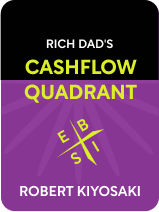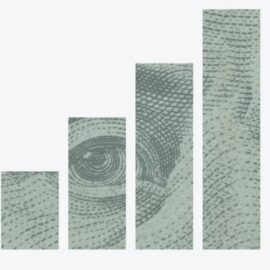

This article is an excerpt from the Shortform book guide to "Rich Dad's Cashflow Quadrant" by Robert T. Kiyosaki. Shortform has the world's best summaries and analyses of books you should be reading.
Like this article? Sign up for a free trial here .
What is the key to being good at investing? What do successful investors do differently?
According to financial educator Robert Kiyosaki, the secret to investing is being good at investing. Risk comes from a lack of information. The risk in investing is investing without enough financial literacy or good information.
Keep reading for Robert Kiyosaki’s advice for beginner investors.
What Kind of Investor Should You Be?
Depending on whether you’re aiming for financial security, independence, or freedom, Kiyosaki has different investing advice for you.
1. The Client is someone who pays a professional to invest their money. You put up the money, but you don’t make the decisions. While Kiyosaki encourages you to try to invest on your own, he says if you don’t have the will or the talent to do so, this is your path.
- Make sure the person you’re paying makes most of their money investing, not off fees. Why would you trust someone to invest your money when they don’t even invest their own?
(Shortform note: Sethi agrees that unless you have a very complicated financial situation, hiring a financial advisor will cause you to lose money in fees while getting the same results you could learn to earn on your own. Sethi notes that mutual fund managers only “beat the market” 25% of the time. In addition to finding a no-fee financial advisor, Sethi says to make sure your advisor is a fiduciary—someone who is legally obligated to put your financial interests first.)
2. The DIY Investor. You do your own research and make your own decisions about where to invest your own money. That is the key feature of the DIY investor and the key difference between this and the next level, the Capitalist.
- DIY investors buy and sell their own stocks. In real estate, they buy, sell, and manage their own properties.
- To begin investing in the stock market, call stockbrokers and ask for their guidance, then open a small trading account.
3. The Capitalist. By Kiyosaki’s definition, capitalists straddle two categories: They’re both big-business owners and investors. Whereas the DIY investor invests her own money, capitalists invest other people’s money. (Because they’re successful business people, banks and investors are more willing to loan them larger sums of money, which the capitalist invests.) You need to have the highest level of financial literacy to reach this level.
(Shortform note: You don’t need to be a capitalist to invest with other people’s money. You can get a personal loan to use to invest, but you’ll need to show you’re credible with a good credit score to get a good interest rate. You can improve your credit score by paying at least the minimum on your credit cards each month, working toward paying off your debt, and opening and closing new cards judiciously.)
Here is Robert Kiyosaki’s advice for succeeding as an investor.
1. Invest in What You Know
Kiyosaki says that wealthy people don’t diversify their assets, and you shouldn’t either. He says it’s better to choose one, or just a few, investment categories so you can become deeply knowledgeable about them and make smarter investments.
(Shortform note: In I Will Teach You To Be Rich, Sethi strongly advocates diversifying your investments across both asset classes, like stocks and bonds, and the type of asset within each class. For example, he recommends investing in stocks of both small and large companies and a mix of short and long-term bonds from different issuers. He says diversifying your investments allows you to balance riskier investments with safer investments, and that the way you diversify your portfolio matters more than exactly what is in it.)
2. Move Your Money
Successful investors keep their money on the move. The concept of the “velocity of money” describes how your money should move: like an avalanche that grows larger as it picks up new assets.
(Shortform note: Technically, the term “velocity of money” means the rate at which money is exchanged in an economy. The healthier an economy, the more money is exchanged as people spend more on goods and services.)
3. Don’t Follow the Crowd
Don’t invest in something just because it’s popular. No one knows for sure what will be a good investment.
(Shortform note: Be particularly aware of possible speculative bubbles, where investors ignore rational valuations and invest based on logic other than intrinsic value. The classic example of a speculative bubble, as Burton Malkiel notes in A Random Walk Down Wall Street, is tulip-mania in 17th-century Holland.)
4. Blue Chip Stocks Aren’t Safe.
Even though these stocks are generally considered less risky, they’re not invulnerable.
(Shortform note: Blue chip stocks are very large, well-established companies with good reputations for investor earnings. It’s a bad idea to invest only in blue chip stocks, though, for the reason Kiyosaki gives above.)

———End of Preview———
Like what you just read? Read the rest of the world's best book summary and analysis of Robert T. Kiyosaki's "Rich Dad's Cashflow Quadrant" at Shortform .
Here's what you'll find in our full Rich Dad's Cashflow Quadrant summary :
- Why the traditional path of college to career doesn't work
- Which types of income will lead you to financial freedom
- An in-depth look at Robert Kiyosaki's four cashflow quadrants






